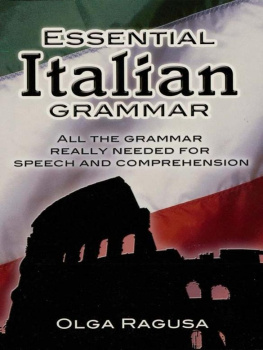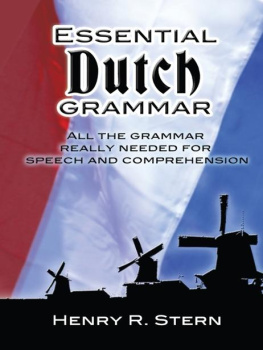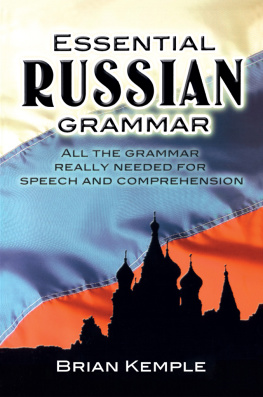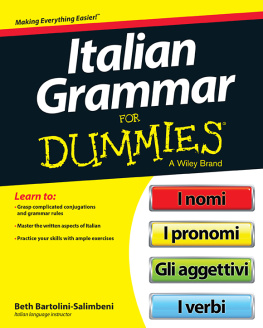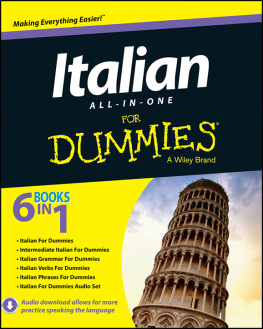DOVER BOOKS ON LANGUAGE
SPANISHAMERICAN SHORT STORIES / CUENTOS HISPANOAMERICANOS: A DUAL-LANGUAGE BOOK, EDITED AND TRANSLATED BY STANLEY APPELBAUM. (0-486-44123-7)
FIVE GREAT GERMAN SHORT STORIES: A DUAL-LANGUAGE BOOK, EDITED BY STANLEY APPELBAUM. (0-486-27619-8)
FIRST ITALIAN READER: A DUAL-LANGUAGE BOOK, EDITED AND TRANSLATED BY STANLEY APPELBAUM. (0-486-46535-7)
INTRODUCTION TO FRENCH POETRY (DUAL-LANGUAGE). EDITED AND TRANSLATED BY STANLEY APPELBAUM. (0-486-26711-3)
FIRST FRENCH READER: A BEGINNERS DUAL-LANGUAGE BOOK, EDITED AND TRANSLATED BY STANLEY APPELBAUM. (0-486-46178-5)
MEXICAN SHORT STORIES / CUENTOS MEXICANOS: A DUAL-LANGUAGE BOOK, EDITED AND TRANSLATED BY STANLEY APPELBAUM. (0-486-46539-X)
FLOWERS OF EVIL AND OTHER WORKS: A DUAL-LANGUAGE BOOK, CHARLES BAUDELAIRE. (0-486-27092-0)
FAMOUS ITALIAN OPERAS: A DUALLANGUAGE BOOK, EDITED BY ELLEN H. BLEILER (0-486-29158-8)
THE MAKING OF ENGLISH, HENRY BRADLEY. (0-486-45144-5)
AN EGYPTIAN HIEROGLYPHIC DICTIONARY, VOL. 2. E. A. WALLIS BUDGE. (0-486-23616-1)
AN EGYPTIAN HIEROGLYPHIC DICTIONARY, VOL. 1, E. A. WALLIS BUDGE. (0-486-23615-3)
1001 MOST USEFUL FRENCH WORDS, MARCELLA OTTOLENGHI BUXBAUM. (0-486-41944-4)
THREE EXEMPLARY NOVELS/TRES NOVELAS EJEMPLARES: A DUAL-LANGUAGE BOOK, MIGUEL DE CERVANTES. EDITED AND TRANSLATED BY STANLEY APPELBAUM. (0-486-45152-6)
SELECTIONS FROM DON QUIXOTE (DUAL.-LANGUAGE), MIGUEL DE CERVANTES. EDITED AND TRANSLATED BY STANLEY APPELBAUM. (0-486-40666-0)
AN INTRODUCTION TO GREEK, HENRY LAMAR CROSBY AND JOHN NEVIN SCHAEFFER (0-486-47056-3)
SPANISH POETRY: A DUAL-LANGUAGE BOOK, EDITED BY ANGEL FLORES. (0-486-40171-5)
FIRST SPANISH READER: A BEGINNERS DUAL-LANGUAGE BOOK, ANGEL FLORES. (0-486-25810-6)
SPANISH STORIES (DUAL-LANGUAGE), EDITED BY ANGEL FLORES. (0-486-25399-6)
INTRODUCTION TO SPANISH POETRY: A DUAL-LANGUAGE BOOK, EDITED AND TRANSLATED BY EUGENIO FLORIT. (0-486-26712-1)
FRENCH STORIES/CONTES FRANCAIS: A DUAL-LANGUAGE BOOK, EDITED BY WALLACE FOWLIE. (0-486-26443-2)
GESENIUS HEBREW GRAMMAR, GESENIUS. EDITED AND ENLARGED BY E. KAUTZSCH. (0-486-44344-2)
GILDERSLEEVES LATIN GRAMMAR, B. L. GILDERSLEEVE AND G. LODGE. (0-486-46912-3)
ALLEN AND GREENOUGHS NEW LATIN GRAMMAR, J. H. ALLEN AND J. B. GREENOUGH. (0-486-44806-1)
SELECTED FOLKTALES/AUSGEWHLTE MRCHEN: A DUAL-LANGUAGE BOOK, JACOB AND WILHELM GRIMM. EDITED AND TRANSLATED BY STANLEY APPELBAUM. (0-486-42474-X)
ITALIAN STORIES: A DUAL-LANGUAGE BOOK, EDITED AND TRANSLATED BY ROBERT A. HALL. (0-486-26180-8)
KAEGIS GREEK GRAMMAR, ADOLF KAEGI. TRANSLATED AND EDITED BY JAMES A. KLEIST. (0-486-46190-4)
SELECTED FABLES: A DUAL-LANGUAGE BOOK, JEAN DE LA FONTAINE. (0-486-29574-5)
FRENCH: HOW TO SPEAK AND WRITE IT, JOSEPH LEMAITRE. (0-486-20268-2)
FIELDS OF CASTILE/CAMPOS DE CASTILLA: A DUAL-LANGUAGE BOOK, ANTONIO MACHADO. EDITED AND TRANSLATED BY STANLEY APPELBAUM. (0-486-46177-7)
INTRODUCTION TO GERMAN POETRY: A DUAL-LANGUAGE BOOK, EDITED AND TRANSLATED BY GUSTAVE MATHIEU AND GUY STERN. (0-486-26713-X)

Copyright 1963 by DOVER PUBLICATIONS, INC.
All rights reserved.
Essential Italian Grammar is a new work, first published by Dover Publications, Inc., in 1963.
International Standard Book Number
9780486113401
Library of Congress Catalog Card Number: 63-2911
Manufactured in the United States by Courier Corporation
20779X33
www.doverpublications.com
Table of Contents
Introduction
Essential Italian Grammar is based on the assumption that you plan to spend a limited number of hours studying Italian grammar and that your objective is simple everyday communication. This book is not a condensed outline of all aspects of Italian grammar. It is a series of hints to help you use more effectively and with greater versatility phrases and vocabulary that you have already learned.
How to Study Essential Italian Grammar
If you have already studied Italian in a conventional manner, you can use this book as a refresher by glancing through all of it first and then selecting those areas on which you wish to concentrate.
If you have never studied Italian grammar, then the following suggestions will be helpful:
Master several hundred useful phrases and expressions such as you will find in any good phrase book or in the Listen & Learn Italian course. You will understand the suggestions contained in Essential Italian Grammar more easily after you have achieved this basic working knowledge of Italian. The purpose of this book is to enable you to gain greater fluency once you have learned phrases and expressions, not to teach you to construct sentences from rules and vocabulary.
Read through Essential Italian Grammar at least once in its entirety. Dont be concerned if anything is not immediately clear to you. What may appear discouragingly difficult at first will become easier as your studies progress. But the first reading is necessary to acquaint you with terms and concepts peculiar to Italian grammar. Learning what these terms and concepts are will help you to improve your comprehension of Italian and to use more freely the expressions you already know. As you use Italian and hear it spoken, many of its grammatical patterns will become familiar to you. Essential Italian Grammar helps you to discover these patterns so that you can use them.
Go back to this book periodically. Sections which seem difficult or of doubtful benefit at first, may prove extremely useful later.
For the most part, the book follows a logical order, taking up the major divisions of grammar in sequence. You will do best to follow this order. However, some students learn best when they study to answer an immediate question or need (e.g., how to form the comparative; how to conjugate the verb to be, etc.). If you are one of these students, turn to the section that interests you. But read through the entire section, rather than just an isolated part. Individual remarks, taken out of context, are easily misunderstood.
Examples are given for every rule. It is helpful to memorize these examples. If you learn every example in Essential Italian Grammar, together with its literal translation, you will have encountered the basic difficulties of Italian and studied models for their solution.
You cannot study Italian systematically without an understanding of its grammar, and the use and understanding of grammatical terms is as essential as a knowledge of certain mechanical terms when you learn to drive a car. If your knowledge of grammatical terms is weak, read the Glossary of Grammatical Terms (p. 94) and refer to it whenever necessary.
In every language there are many ways to express the same thought. Some constructions are simple, others more difficult. During your first experiments in communication, use a simple construction. Throughout Essential Italian Grammar you will find suggestions on how to avoid complicated constructions in favor of simpler ones. You may ultimately wish to master a more sophisticated way of expressing yourself. Be satisfied at first with the simplest.
As you begin to speak Italian, you will become aware of the areas in which you need the most help in grammar. If you have no one with whom to speak, speak mentally to yourself. In the course of a day see how many of the simple thoughts youve expressed in English you are able to turn into Italian. This kind of experimental self-testing will give direction to your study of grammar. Remember that you are studying this course in Italian not to pass an examination or to receive a certificate, but to communicate with others on a simple but useful level. Essential Italian Grammar is not the equivalent of a formal course of study at a university. Although it could serve as a supplement to such a course, its primary aim is to help the adult study on his own. Indeed, no self-study or academic course or series of courses is ever ideally suited to all students. You must rely on and be guided by your own rate of learning and your own requirements and interests. Essential Italian Grammar makes self-study easier.
Next page
